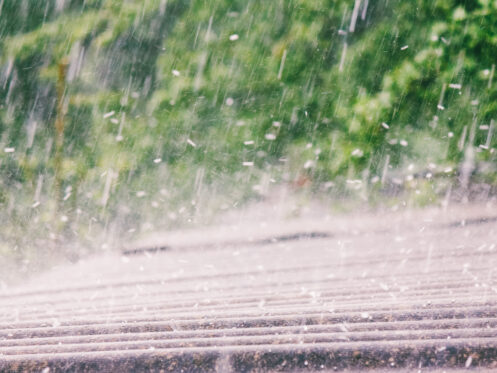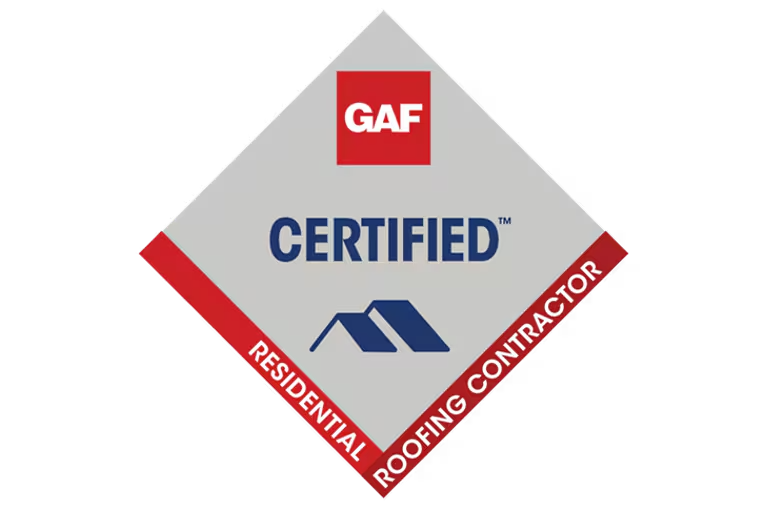A hailstorm can leave behind more than just dents on your car. Your roof can sustain extensive damage as well. The signs of damage aren’t always easy to spot, but you should stay off of your roof just in case; leave that to professionals. Instead, look from indoors, whether from upper-story windows or attic areas. Some damage may be visible right away, like cracked shingles or scattered granules. Other issues develop over time, turning into leaks and structural rot. At The Roof Detective in Columbus, OH, we help homeowners assess the damage left behind after a hailstorm.
Light Impact and Extensive Damage
Even if hailstones are small or scattered, they may strike your roof at high speeds. The combination of wind and ice can create enough force to shift roofing components even if nothing looks broken from the ground. One overlooked problem is the adhesive strip that seals overlapping shingles together. On newer roofs, this strip helps keep water out by holding the shingle edges flat. A roof being hit with hail can loosen that bond without tearing the shingle itself. Once the seal weakens, wind can lift the edge just enough for rain to sneak underneath.
You might also notice raised shingle lines that weren’t there before. This can mean the underlayment beneath the shingles has puckered or buckled. Even a slight lift along that layer allows water to settle under the roof’s surface.
Soft Spots That Hide in Plain Sight
Hail can compress the layers beneath your shingles without leaving visible signs. From the ground, everything might look normal, and even an attic check won’t always reveal issues. When hail hits with enough force, it can crush the fiberglass mat inside an asphalt shingle. The outer surface may stay intact, but the core weakens and no longer holds its shape or resists moisture the way it should.
This type of impact changes how the shingle behaves under stress. It might feel soft or spongy in places, especially after heavy rain or snow. Heat from the sun dries the area unevenly, which causes tension across the surface. That stress leads to cracks or separation in the material over time. If certain areas of your roof begin to sag or feel unstable underfoot during inspection, this can point to hidden damage from hail. Left untreated, those soft zones become entry points for water, especially during freeze-thaw cycles or prolonged storms.
Leaks That Don’t Show Up Right Away
Hail can create microfractures in the waterproof barrier under your shingles. These hairline breaks let in a little water at a time, usually during heavier rain. Over time, insulation near that spot starts to feel damp, and wood begins to warp or rot. If you’ve started to smell something musty near your ceiling but can’t find the source, your roof may be the culprit.
Water stains might appear near recessed lights, ceiling fans, or along the corners of upstairs rooms. This is because moisture travels along beams and wiring before dripping. The leak you find may sit several feet away from the damage. By the time you see peeling paint or mold spots, the problem is no longer minor.
Shingle Pieces or Debris in the Yard
After hail, take a few minutes to walk around your property. If you see pieces of dark, coarse material near the base of your home, it could be shingle granules. This material protects the surface of asphalt shingles. When they’re gone, UV rays and moisture hit the shingle directly.
You might also find whole shingle corners or pieces that broke off during wind-driven hail. Even if you don’t have a missing patch visible from the ground, small tears or cracks weaken the overall structure. Wind finds those weak spots next time and starts to lift shingles.
Metal Flashing and Vent Damage
Flashing damage might also cause problems with how your attic ventilates air. Vents that shift even slightly out of alignment after a hail hit can disrupt airflow, especially in attics that depend on passive ventilation. A ridge vent that buckles or separates no longer moves hot air the way it should. That trapped heat can push roof temperatures up by 20 degrees or more, especially in summer. Warm temperatures can break down the underlayment faster and shorten the life of the shingles. If you’ve noticed the upstairs of your home feeling warmer than usual or your HVAC system is running longer to cool your house, the issue might trace back to hail damage that went unnoticed.
Another spot worth checking is the flashing that sits behind gutters. This small, often overlooked strip directs rain away from the fascia board and toward the downspout. When hail lifts or crimps that flashing, water starts to sneak between the roof edge and the gutter system. That hidden moisture swells the wood trim and invites pests, especially when temperatures shift quickly after a storm. Even if your shingles look fine from the street, the surrounding components might be telling a different story. The key is to check every part of the system that hail might have shifted, dented, or bent out of line.
How Roof Age Affects Damage Severity
Your roof doesn’t have to be old to experience damage, but its age plays a big part in how it holds up. A newer roof with flexible shingles might bounce back better than one that’s old and dried out. Older materials tend to crack instead of compress.
If your roof’s approaching the 15-year mark or has already had several repairs performed, it’s more likely to suffer deeper damage from hail. You’ll want to know the roof’s material type and its installation date.
What to Document if You Think You Have Damage
The first few days after a hailstorm are the most important for documenting roof damage. Even if the damage isn’t obvious from the ground, the storm may have stripped granules, cracked shingles, or dented flashing. If you wait too long, wind or rain can wash away some of the physical signs, making it harder to prove that your roof was affected. Taking clear photos while the damage is still fresh gives you a stronger foundation for your insurance claim. Schedule an inspection with our team to spot even minor issues.
Make a simple record of the storm’s date, time, and duration. If you noticed wind direction or heard hail hitting specific sides of your home, jot that down. Include whether your neighbors experienced damage, especially if you saw repair crews or roof inspections on nearby homes. That kind of neighborhood-wide impact can help strengthen your case if your insurer asks for context.
Insurance coverage for hail damage varies. Some policies include full replacement, while others cover only partial repair or depreciation-based costs. Your deductible could also affect the outcome. If the cost to fix the damage doesn’t exceed your deductible, you may decide not to file.
Timing Matters
Even small hail damage has the potential to get worse when you wait. A few missing granules in summer could become a cracked shingle after the first freeze. That crack opens wide with snow, and before long, you’ve got a leak that ruins insulation and ceiling drywall.
If you’ve had more than one hailstorm in a season, the damage adds up. One hit weakens the surface, and the next one finishes the job. Think of each storm as a layer in a long-term problem.
Take Care of Your Home After Hail Damage
Small cracks and minor damage often turn into water damage, insulation problems, or even mold. If you’ve noticed anything suspicious or just want peace of mind, it’s smart to get an expert’s opinion on whether roof repair is the next step. We also offer full roof replacements, storm damage assessments, and insurance claim assistance. Schedule your roof inspection today with The Roof Detective in Columbus and make sure your home stays protected.





